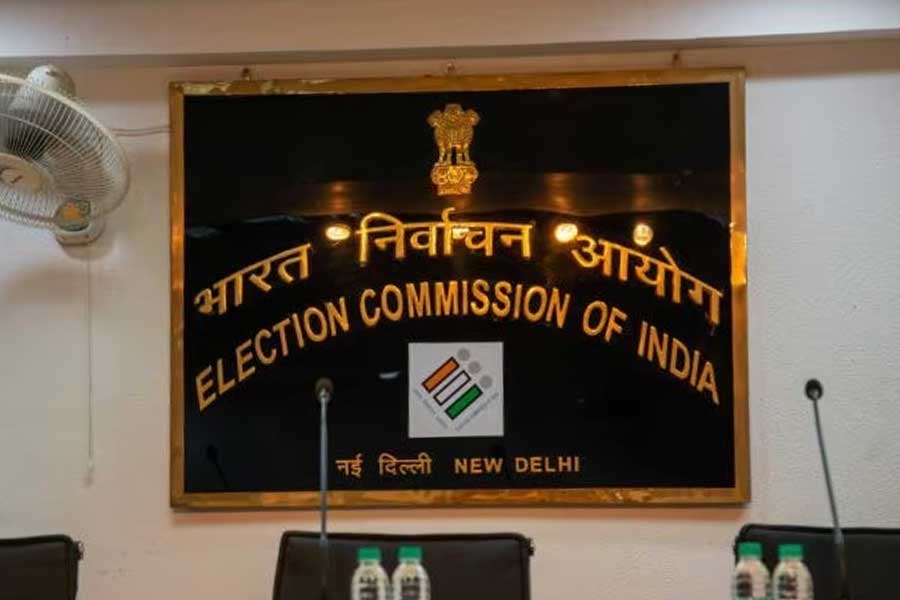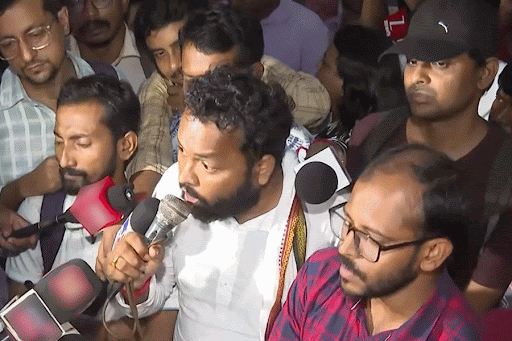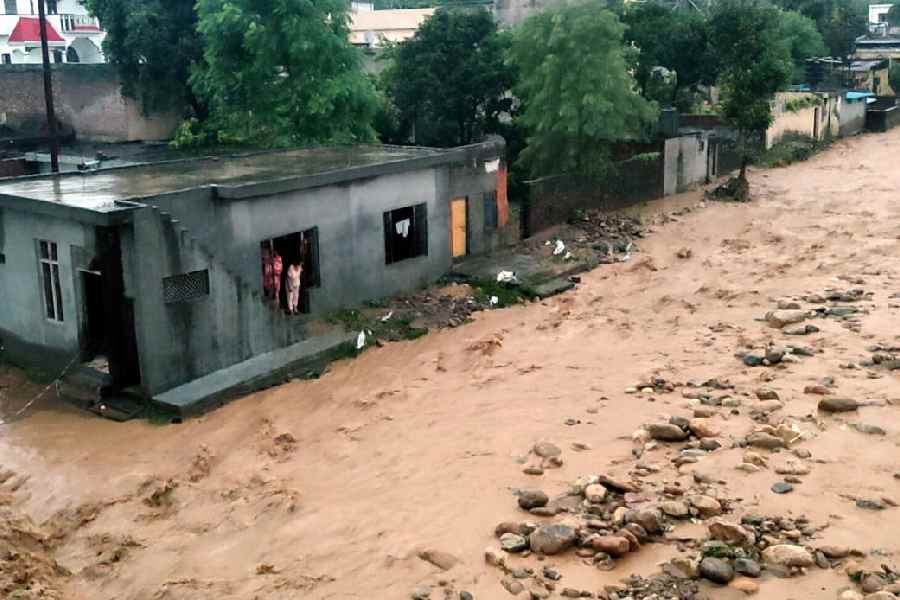 |
| The 64 yogini temple of Ranipur-Jharial in Balangir district. Telegraph picture |
Balangir, Oct. 21: A person visiting the ruins of Ranipur-Jharial about 110km from Balangir, is welcomed by a message on a signboard outside the entrance of the hypaethral temple of 64 yoginis that reads — this monument has been declared to be of national importance and protected under the ancient monument and archaeological sites and remains act 1958 (24) of 1958. Any one inflicting any kind of damage to this monument is liable for prosecution.
A similar message is found outside the famous Indralath temple, situated at a distance of about 100 meters from the 64 yogini temple.
It reads: the monument is protected under Ancient Monument Preservation Act 1956 (12) of 1956.
However, the irony is that there is nobody to protect and maintain these monuments.
This callous attitude of the state government as well as district administration towards these rare and ancient monuments of 9th century AD has invited widespread concern by scholars, historians and researchers.
Historian and archaeologist Prof Satyanarayan Nanda who teaches history at the Rajendra College here filed a PIL in Orissa High Court recently in which he has asked for a direction to the government authorities to conserve the monument.
Nanda says, “Ranipur Jharial is an important archaeological site. It houses one of the five existing rare temples without roofs dedicated to 64 yoginis in India. Three such temples are at Hirapur and one at Dudhai near Lalitpur.”
“Direction should be given to the state government to constitute a governing body consisting of the members of local people, historians and archaeologists to conserve the monument,” said the PIL.
In the rocky terrian of Ranipur-Jharial remains the ruins of the stone temples and 64 yogini temples that bears testimony of a glorious bygone era.
The archaeological site, which once boasted of about 120 temples, now has just 52 of them. Most of these temples are in dilapidated state and needs immediate attention of archaeologists.
The hypaethral temple of 64 yogini that houses the yoginis in various dancing poses is a unique monument.
However, 13 of these 64 carvings of yoginis made up of sandstone are missing and a few others have been damaged beyond recognition.
The stone temples are situated in clusters in various parts of the rocky outcrop and in various sizes.
A short distance from these temples is another temple on a raised raised platform. This 20-meter high Indralath temple is claimed to be the tallest brick temple of that era. But now cattle frequent the temple premises.
Lack of maintenance has taken a toll of this 1,200-year-old temple, which is evident from the wild plants that cover the upper portions of the temple.
Eminent historian Sadananda Agrawal who has done extensive study on the Ranipur-Jharial monuments told The Telegraph that recent discovery of some copper plates from the area had thrown new lights on the monuments.
He said: “The yogini images of Ranipur-Jharial gives us a true reflection of what the yogini cult is about.”
At present no tourist visits the place as there is no facility for staying.
“The guesthouse constructed near the site lies abandoned. The twin villages of Ranipur and Jharial are away from the ruins and, so, it is difficult to get food and water. Only scholars, researchers and historians visit the place once or twice a month,” said Rameswar Prdhan, who a local resident.










